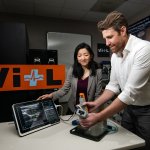
News • AI-GUIDE system
Handheld robot can help stem fatal blood loss
The AI-Guided Ultrasound Intervention Device is a lifesaving technology that helps a range of users deliver complex medical interventions at the point of injury.

The AI-Guided Ultrasound Intervention Device is a lifesaving technology that helps a range of users deliver complex medical interventions at the point of injury.
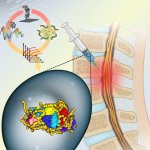
By employing artificial intelligence (AI) and robotics to formulate therapeutic proteins, researchers promoted tissue regeneration.
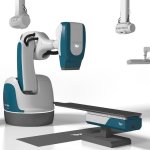
GenesisCare announced the establishment of the Accuray CyberKnife S7 robotic accelerator that delivers radiosurgery treatment guided by AI and synchronized with real-time imaging.
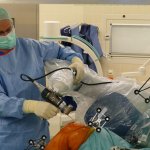
Professor Dr Henning Windhagen is a great fan of semi-automatic systems that help with implants but leave the surgeon in the driver’s seat.

A miniature colonoscopy robot on tank-like treads, which carries a camera and uses other small surgical tools, could have clear benefits for both patients and endoscopists.

Un estudio de la Universitat Oberta de Catalunya (UOC) analiza los factores que influyen en la percepción de las personas sobre la utilización de la robótica en las intervenciones quirúrgicas médicas.

A robot has performed laparoscopic surgery on the soft tissue of a pig without the guiding hand of a human – a significant step toward fully automated surgery on humans.

A literature review fleshes out key issues currently preventing the proliferation of robotic procedures, specifically their use in image-guided interventional procedures in the brain.
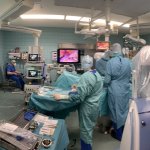
Esslingen is one of the most innovative regions worldwide. Thus, it does not come as a surprise that Esslingen‘s 660-bed hospital is interested in adopting cutting-edge technology. A surgical robot, to be precise.
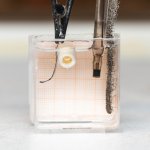
Researchers have developed a combination of materials that can morph into various shapes before hardening. The material is initially soft, but later hardens through a bone development process that uses the same materials found in the skeleton.

Dr Jan Stallkamp, Professor for Automation in Healthcare and Biotechnology, has a vision: robots that can treat patients more efficiently and more precisely than any human physician.
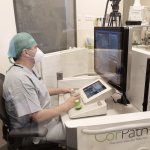
Interventional cardiology is entering a new era with the wider introduction of robotic procedures which bring significant benefits to the medical team and the patient. Two experts outlined the benefits at the ESC 2021 Digital Summit.

The team at the Institute of Medical Device Technology at the University of Stuttgart, Germany, is developing methods to produce top-quality medical devices at affordable prices. Professor Dr Peter Pott, the director of the institute, turns to 3D printers to successfully realize his vision of “high end at low cost”.
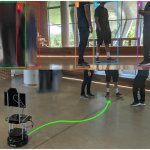
A new strategy to reduce the spread of COVID-19 employs a mobile robot that detects people in crowds who are not observing social-distancing rules, navigates to them, and encourages them to move apart.

AI-designed Xenobots reveal an entirely new form of biological self-replication—promising for regenerative medicine.

The joint research team of Prof. Hongsoo Choi (DGIST) & Prof. Sung Won Kim (Seoul St. Mary’s Hospital), developed an hNTSC-based microrobot for minimally invasive delivery into the brain tissue via the intranasal pathway.

Using surgical robotic systems in OR settings brings many benefits, but there are also challenges that must be overcome before implementing the systems into surgical routine. We spoke with Megan Rosengarten, president of Medtronic’s Surgical Robotics business, about the technology, as well as the company’s efforts to promote the spread of robot-assisted surgery across Europe.

Robotics4EU is the European Commission’s answer to the unprecedented importance of robotics in modern economy. Launched officially in January 2021 under the Horizon 2020 Research and Innovation programme, Robotics4EU aims to take concrete steps to ensure a more widespread adoption of (AI-based) robots in the EU, particularly in the areas of Healthcare, Inspection and Maintenance of…

At their workplace, neurosurgeons often have to make compromises since most ORs were not designed with the specific needs of their discipline in mind. To address this issue the University Hospital in Essen, Germany, equipped an OR especially for neuro- and spine surgery. The aim is nothing less than revolutionizing the field with the help of digitalisation and cutting-edge technology.

Cécile Geneviève is one of the few women who lead research and development (R&D) at a major company and her increasingly female team reflects women’s growing interest in the field. But while gender balance is an important criterion, it takes a broad palette of skills to innovate to alleviate pain for millions of patients, she explained in an interview with Healthcare in Europe.
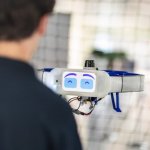
A student team at Eindhoven University of Technology (TU/e) has introduced an interactive drone that guides elderly people to the exit during a fire in a nursing home, even before the fire brigade arrives. The Blue Jay Aeden is said to be the first interactive drone in the world that can transmit emotions and can fulfil an important function in saving people's lives.

Medical robotics company Robocath and Rennes University Hospital announce the launch of a co-development research program using robotics to improve treatment for stroke victims. With the support of Philips France, this program will be implemented over the next four years. It will focus on the use of robotics in treating strokes, the second most common cause of death globally after myocardial…
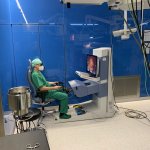
In early 2020, Landeskrankenhaus (LKH – regional public hospital) Feldkirch in Austria procured two robotics systems. Dr Burghard Abendstein, head of department of Ob/Gyn, welcomes this – as he says – rather unusual but future-oriented decision of the hospital management and has been using the Asensus Senhance surgical system for laparoscopic procedures in gynaecology.
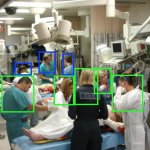
Computer scientists at the University of California San Diego have developed a more accurate navigation system that will allow robots to better negotiate busy clinical environments in general and emergency departments more specifically. The researchers have also developed a dataset of open source videos to help train robotic navigation systems in the future. The team, led by Professor Laurel Riek…

Medical robotics company Robocath announces the successful completion of first five robotic coronary angioplasties in Belgium. The Percutaneous Coronary Interventions (PCI) were performed on April 8 and 13 by Prof. Stefan Verheye, a recognized and highly experienced interventional cardiologist at ZNA Middelheim hospital in Antwerp, and his team. Robotic-assisted PCI has never been done before in…